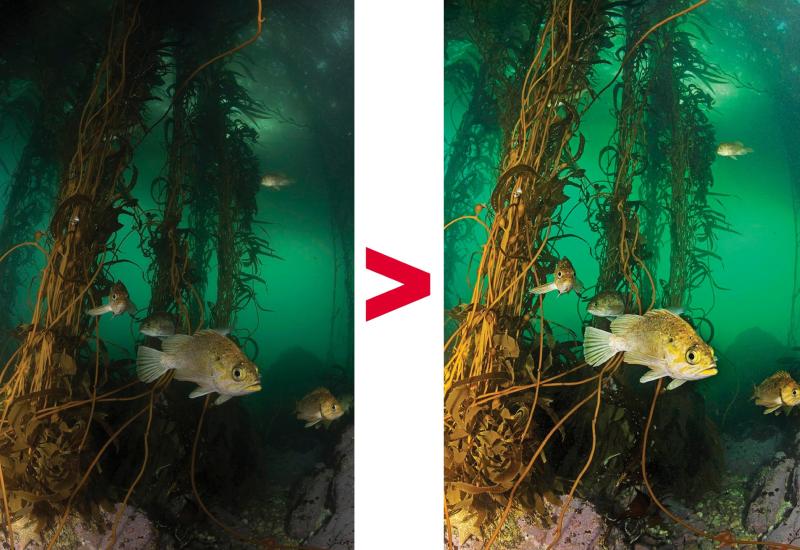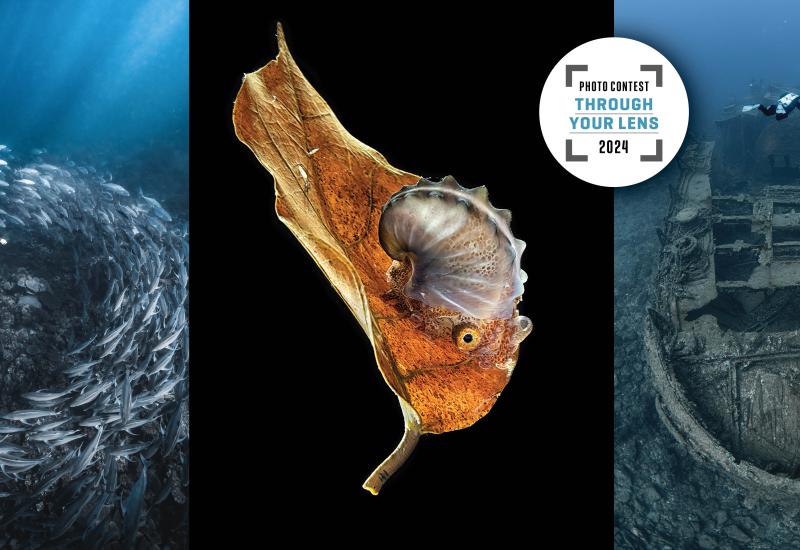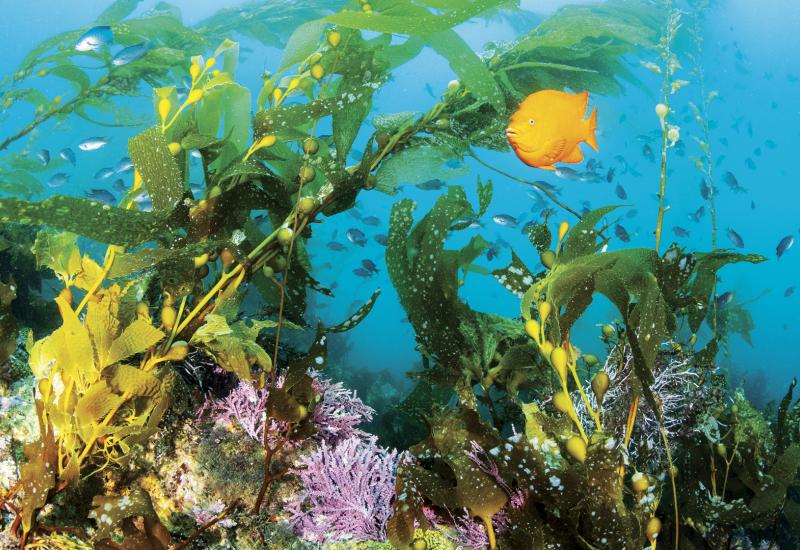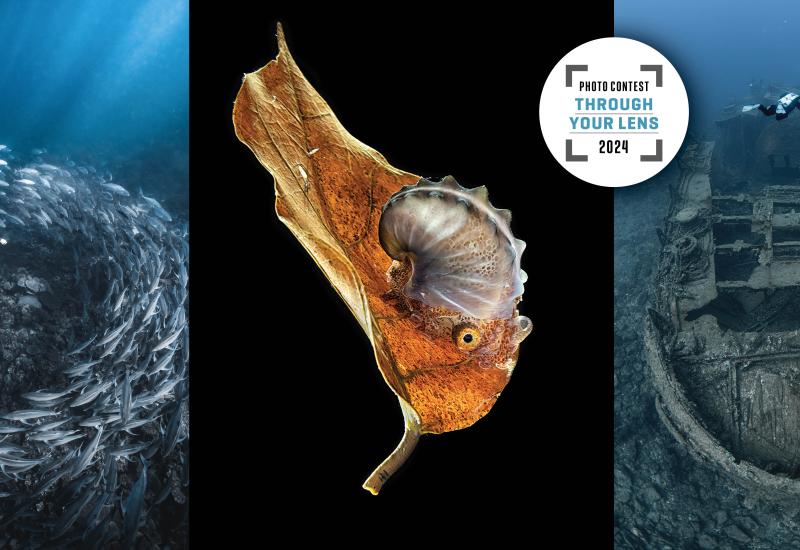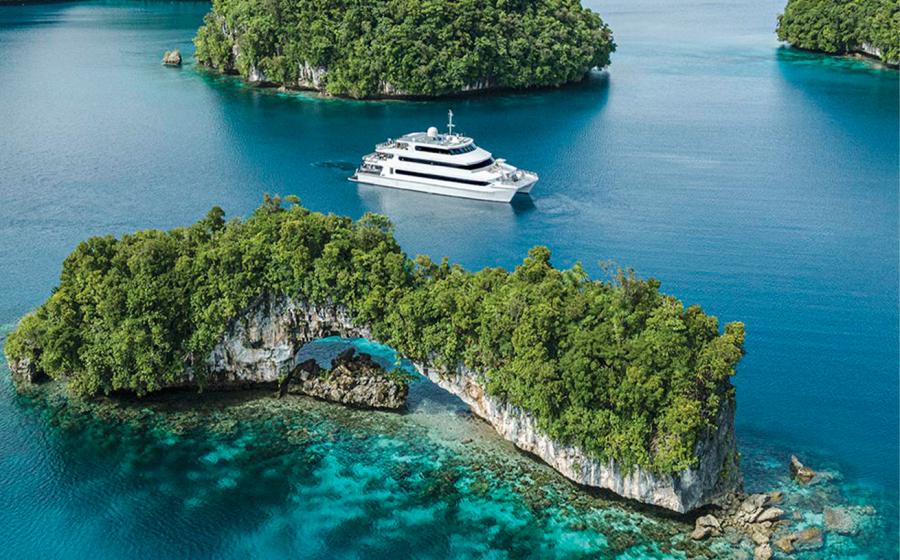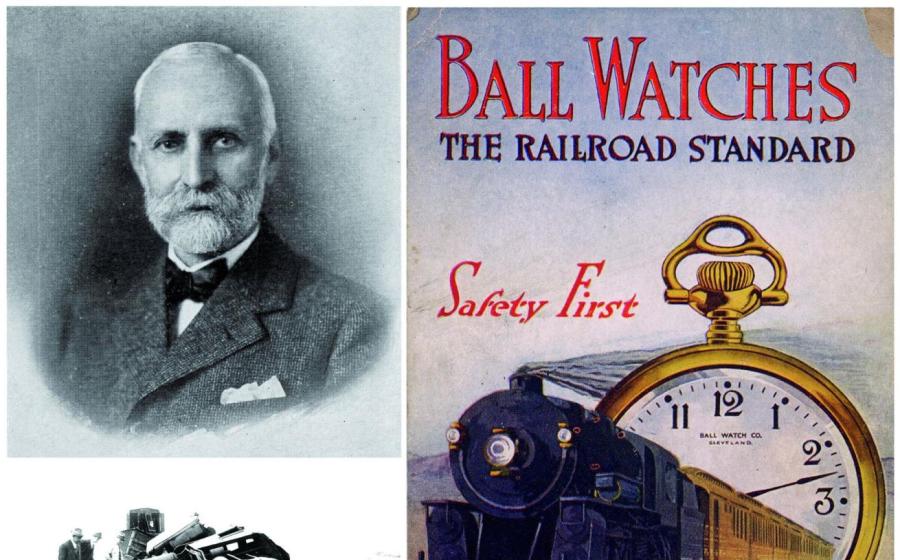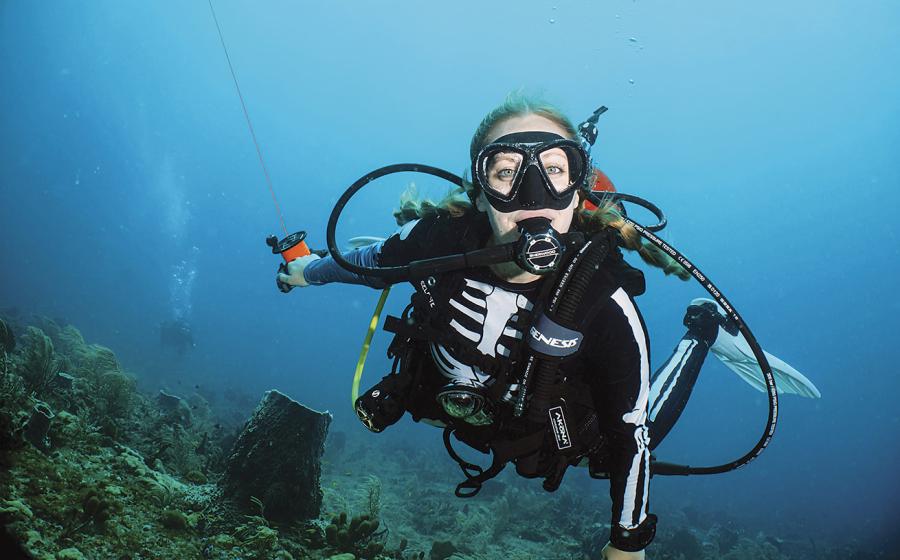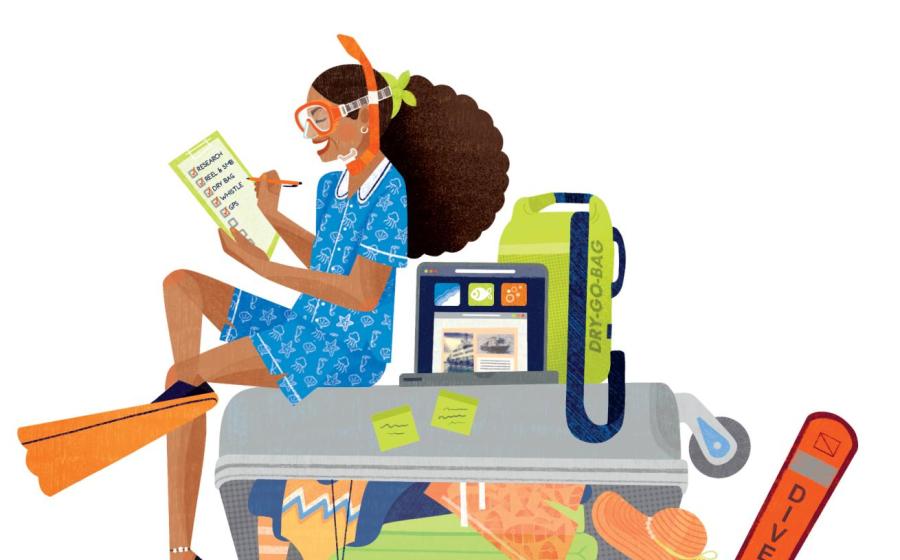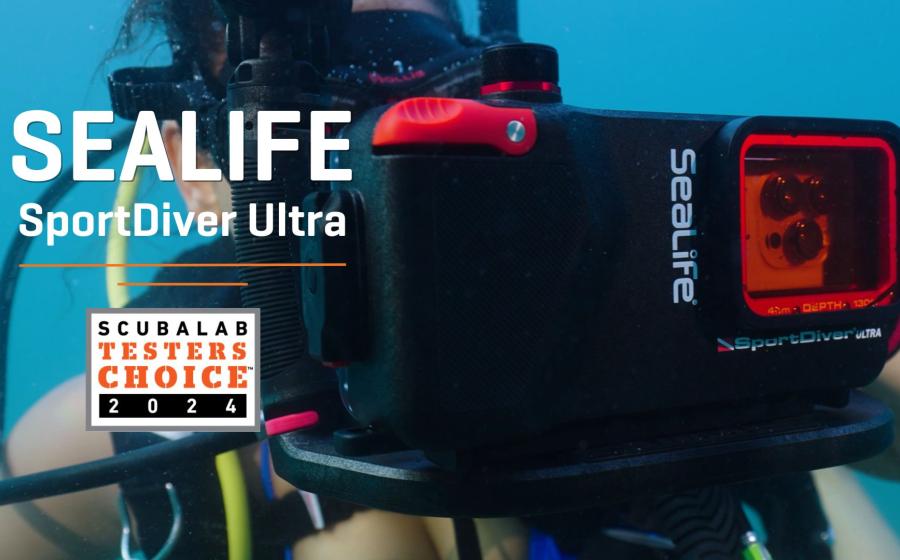Taking Care of Your Underwater Photographer
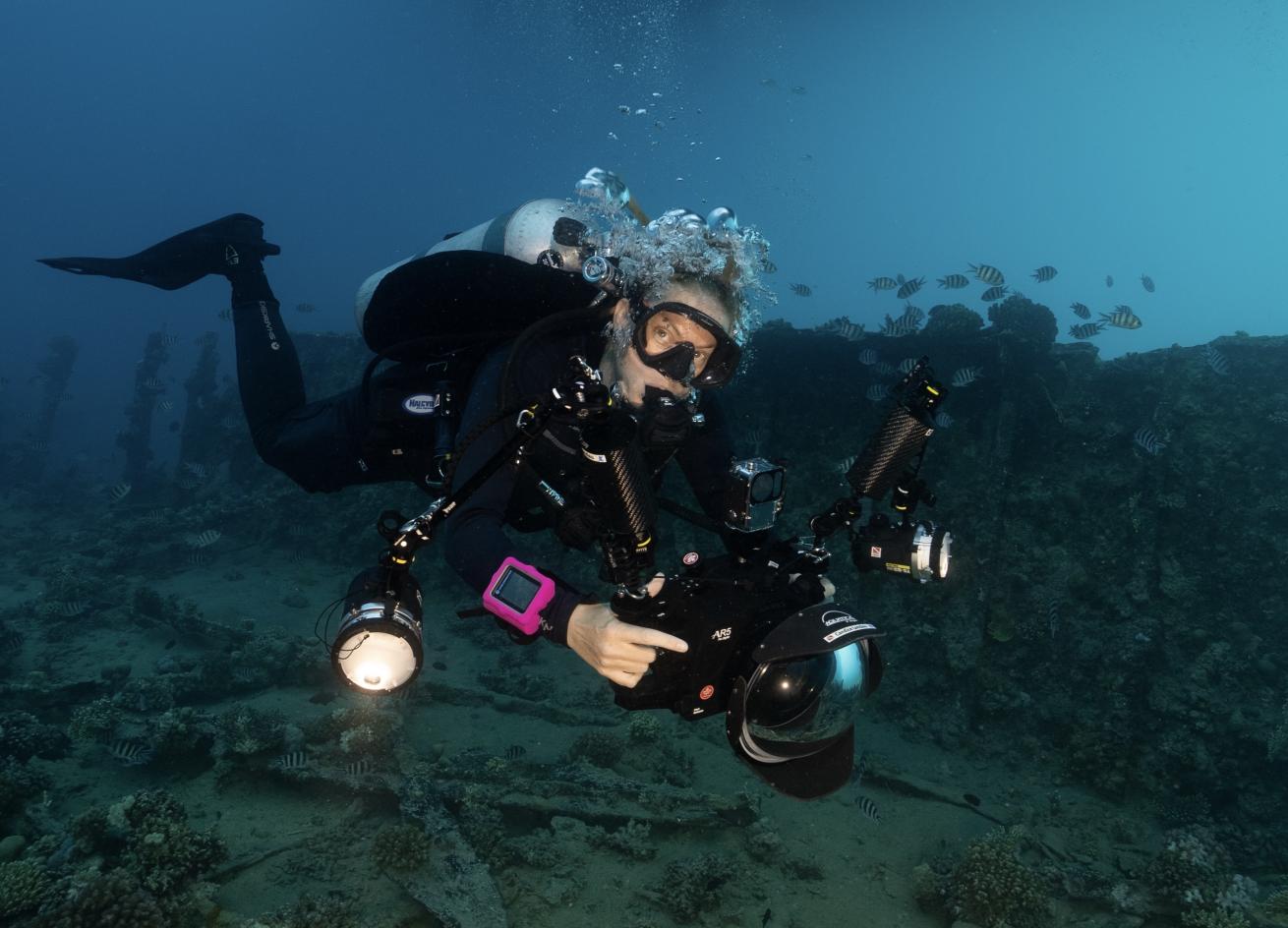
Kristin PaterakisAn underwater photographer being photographed underwater.
I check my dive computer. My NDL is 10 minutes. Plenty of time.
I glance down to my buddy. She’s floating over an anemone, her DSLR camera in its bulky underwater housing aimed at a fish swimming among the surrounding coral. She’s adjusting her lights just so, kicking to change her angle—flailing a bit, to be honest, her usually impeccable buoyancy made shaky in the camera’s presence.
I glance down. Where she’s been the entire dive, below me. I motion to get her attention and tap my computer to ask what her NDL is at.
She misses my signals. Her eyes are only for marine life right now.
I roll my own eyes, kick down and look at her dive computer myself. I sigh. It will be another extended safety stop for us.
Diving With an Underwater Photographer
If you’ve ever dived with an underwater photographer, you know that they can be … distracted. Their buoyancy becomes wobbly, their situational awareness spotty and their dive computers get checked less often than they would be otherwise. Tunnel vision is rampant. I’d need more than two hands to count the number of impressive marine specimens I’ve spotted—sharks, turtles, rays, once even the sound of a whale in the distance—only for my underwater photographer to miss them because they were glued to a fish they’d already photographed a dozen times.
Which raises the question: How can one be a good dive buddy to an underwater photographer? It’s not hard, but it’s important to understand what you’re getting into. Here’s what you should know.
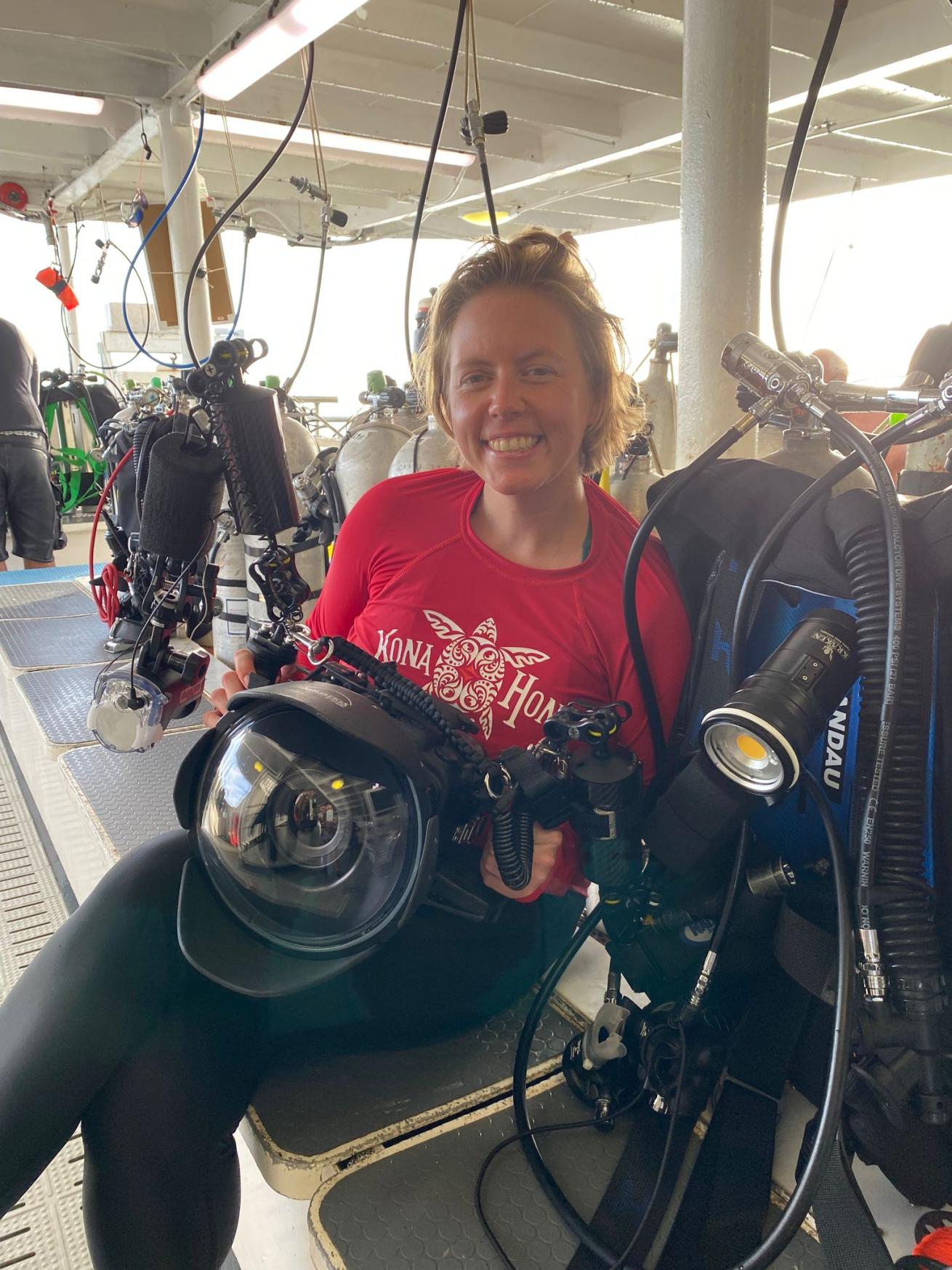
Heidi IngramOne such underwater photographer. Look at the size of that dome port.
1. Be Patient and Provide Assistance
Many underwater photographers are quite good divers without a camera in their hands, so if you were to ask them if their buoyancy and other skills are impacted while diving with a camera, they might tell you that they’re not. And that might be true. But in many cases, it won’t be, and they may not realize it at all. It’s the distraction that’s turning them into fibbers.
As soon as you put a camera in a diver’s hands, their attention goes to that. I’ve felt it happen with a simple GoPro, as I suddenly forget how to hover smoothly because there’s a cool shark swimming by. Swap the GoPro out for a DSLR in a big fancy housing with the huge strobes, the dome port the size of a dinner plate, the backup video lights and the GoPro stuck on top, and it’s no wonder skills are impacted. An underwater photographer is task-loaded on every dive.
So don’t be surprised if your underwater photographer wobbles while they adjust their lights, or misses a big manta ray that swims by. It happens to all of us, even without an attention-hungry camera in our hands. Be aware up front, and you’ll be ready to make sure both you and your photographer have a great dive.
Related Reading: Ask a Pro Photographer: How to Capture the Perfect Shot
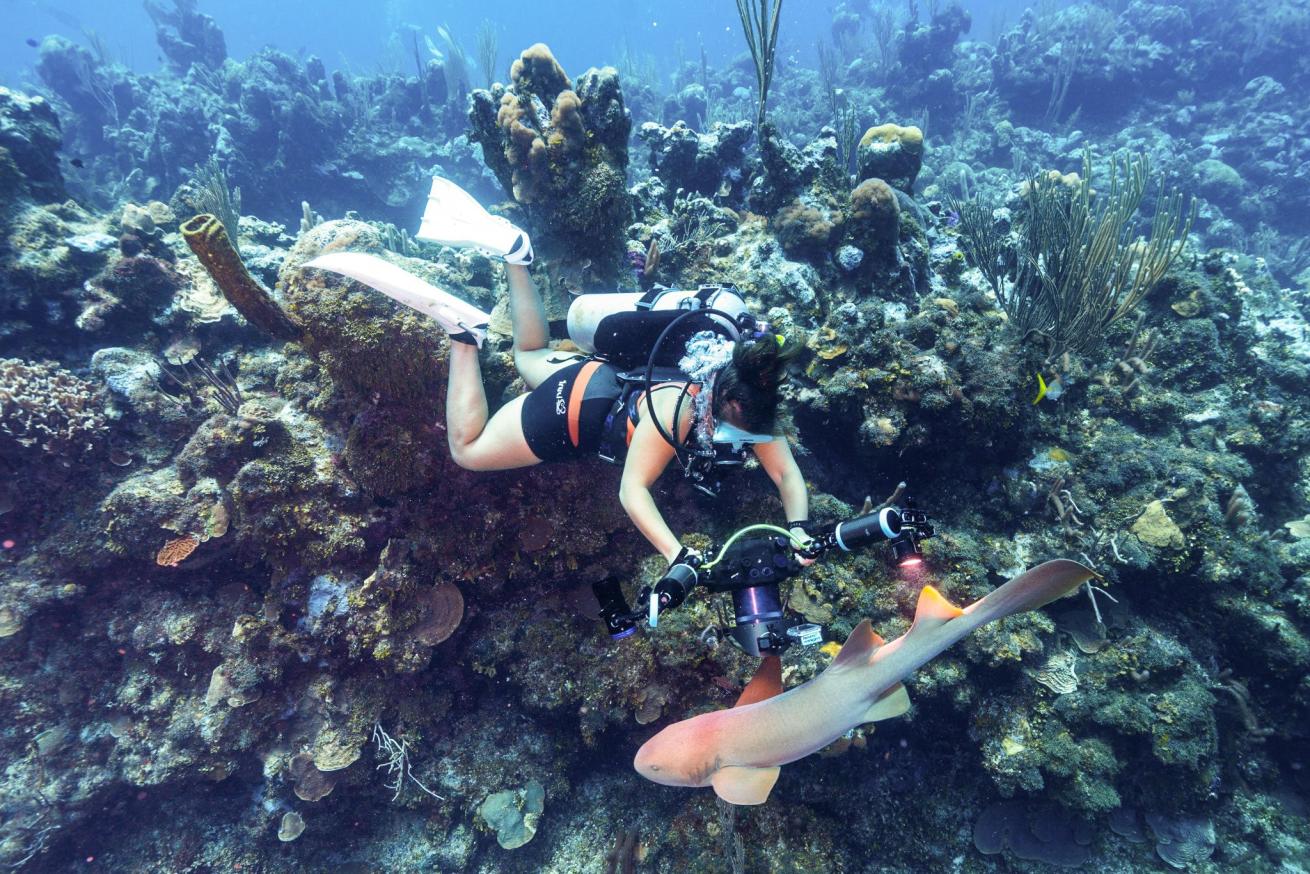
Candice LandauCritter found!
2. Critter Spot for Them
It’s important to know what type of lens your underwater photographer is taking on the dive. If they’re using a wide-angle lens, they’ll be all over the place, and they’ll want you to pose and get involved. More on that later.
If they’re using a macro lens, however, get ready for some tunnel vision. Macro photographers can easily spend an entire dive in one place photographing tiny things and are happy to do so. (Which is another reason to be clear on their lens selection before you get in the water—macro dives are very different from other dives.) It also gives you a huge opportunity to help your underwater photographer, and gives you a fun little quest while you’re diving to boot.
While they’re focused on that nudibranch or skeleton shrimp, look around for other good spots for them to photograph. A macro dive forces the photographer to slow down and really look at the underwater world, and you can enjoy this same slow, meditative pace without needing to bring a camera.
So find the rare creatures or photo chances that they’re missing. Poke them or wave to them or wait until they’ve finished with their current spot—this is something to discuss before the dive, in fact, as there may be certain critters they want to know about immediately and others they don’t. Have a torch so you can direct their eyes to the prize quickly, though be careful not to ruin a photo they’re already taking. Done right, and you’ll both benefit from the fruits of your quest.
3. Check on Them
Just because your underwater photographer is regularly task loaded won’t mean that all of their diving abilities will desert them. In fact, underwater photographers often have great buoyancy with their cameras stowed, and they tend to have either a lot of dive training, experience or both. It’s when it’s time to take photos that you may need to assist.
Remember: The camera demands attention, so they might forget to check their computer or gauges as often as they would otherwise. That’s why it’s good to check up on them. Keep an eye on their air, depth and NDL. If you’re not sure, swim over and check yourself. Make sure you’re confident of your location and the way back to the boat or shore.
Treat diving with an underwater photographer as exactly what it is—diving with a technically skilled, but distracted, diver. If there’s an issue, they’ll likely have the skills and experience to help, but you’re the one in the best position to make sure an issue doesn’t arise.
Related Reading: 17 Underwater Photo Accessories We Love
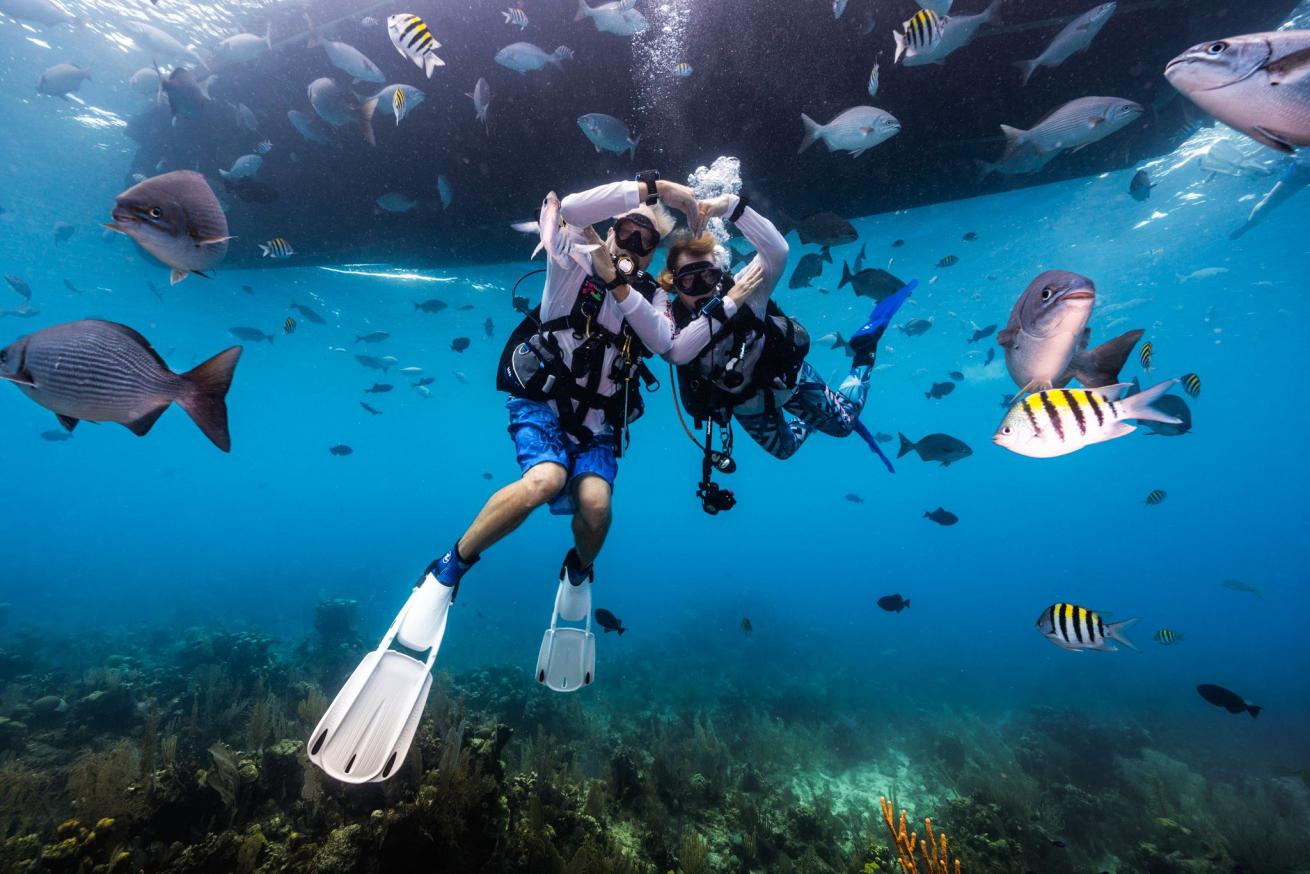
Candice LandauIf you have two buddies, like Dan and Susan Dolezal, you can do some cool poses ❤️
4. Pose for Them
Here’s the part underwater photographers will be most excited about, especially if they’re equipped with a wide-angle lens: A buddy means they’ve got a model! Like it or not, if you’re diving with an underwater photographer, you’re probably going to have your picture taken, so you might as well be good at it.
First of all, make sure you have good buoyancy and trim. Good dive fundamentals make for better photos, so make sure you’ve got your dive game down.
Ensure that your gear is in order as well. Nothing will ruin a picture quite as quickly as a dangling SPG, so make sure everything is attached properly and streamlined. If your gear has a splash of color here or there, that’s even better. And when it comes to masks, make sure your eyes are visible if possible—mirrored masks just don’t look as good in photos.
Communicate with your underwater photographer. This starts before you get in the water. Discuss what signals they’ll use to describe how they want you to pose, and then pay attention to them during the dive. They’ll tell you where they want you to be, what direction to face and what to do with your light.
When you’re in a pose, hold it as best as you’re able! Your underwater photographer might need to adjust their lights, move to get a different angle or change a camera setting. Hold the pose for as long as you can without sinking or running into anything.
Take slow, relaxed breaths. Most photographers will wait until you’re breathing in before taking a photo, since bubbles can foul up an otherwise good shot, so the more time you give them, the less time you’ll spend holding that pose.
For more, these articles from PADI and Kate Jonker expand on the topic. You could even pose mermaid-style. Be the best underwater model you can be!
A Rewarding Experience
Diving with an underwater photographer is a unique experience. It’s fun, because just as your photographer has something to do, so do you—you’re an integral part of their success, both in creating fantastic photographs and in making sure the dive is safe and successful.
So the next time you get the opportunity to dive with an underwater photographer, try it out. If nothing else, you’ll get some good photographs out of it. They just may be of fish.

